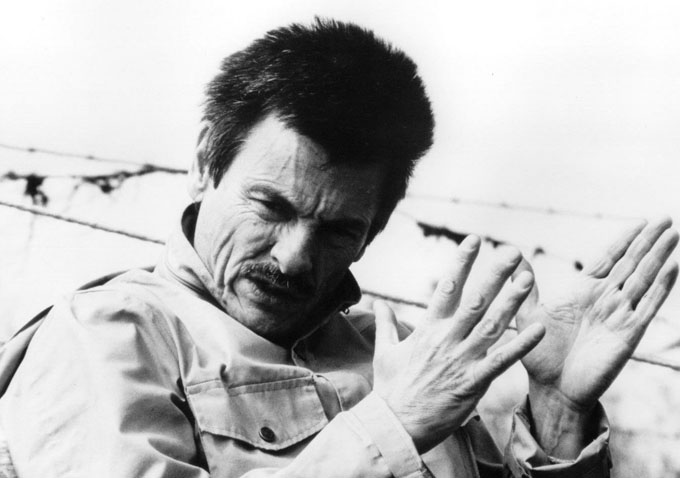 Andrei Tarkovsky belongs on a very short list with a group of directors that includes Werner Herzog, Rainer Werner Fassbinder, Alejandro Jodorowsky and Kenneth Anger: shit-kicking rebels who brought ruthless and transgressive art cinema into the second half of the twentieth century. These men simultaneously destroyed and re-defined the boundaries of what was, at the time, considered to be a traditional cinematic narrative. Their weapon of choice was celluloid.
Andrei Tarkovsky belongs on a very short list with a group of directors that includes Werner Herzog, Rainer Werner Fassbinder, Alejandro Jodorowsky and Kenneth Anger: shit-kicking rebels who brought ruthless and transgressive art cinema into the second half of the twentieth century. These men simultaneously destroyed and re-defined the boundaries of what was, at the time, considered to be a traditional cinematic narrative. Their weapon of choice was celluloid.
Ingmar Bergman once proclaimed the Soviet-born Tarkovsky as “the greatest [director] of them all… the one who invented a new language” (Bergman’s cinematographer Sven Nykvist lensed Tarkovsky’s last feature “The Sacrifice,” about a man who makes a bargain with God to save the world) and although I’ve only seen three of his seven features – “Ivan’s Childhood,” a tone poem to war and youth; “Andrei Rublev,” a stark and brilliant evocation of 15th-century Moscow; and his epochal “Solaris” – I’ve seen enough to know that Tarkovsky’s particular cinematic language is, for lack of a better word, distinctive. He’s a real-deal iconoclast and here we have a new video essay, “Fire and Bach” (highlighting two of the Russian filmmaker’s favorite elemental variables), that burrows even deeper into the philosophy behind his films.
Even taken out of context, Tarkovsky’s art seems ahead of its time. The Russian renegade was never one to expound on questions concerning the abundance of nature-based imagery in his work (“I really don’t know how to deal with such questions” was his humble explanation), but Dan Noall’s four-minute essay sheds light on Tarkovsky’s repeated use of fire, and its variation in purpose across the course of his filmography. Fire represents different things in different Tarkovsky films: in the hushed, candlelit scenes of “Andrei Rublev,” it creates an almost ethereal aura of supernatural dread, while the infamous “burning protestor” scene from the director’s “Nostalghia” is a more jarring, violent image when taken on its own. Noall’s essay picks wonderful, dreamlike passages and images from all of Tarkovsky’s films, and it’s all buoyed considerably by the theme for his “Solaris.” Watch the whole video below. [35MM]






I wouldn\’t really call this an "essay" … when did this site stop reporting news in favor of freshman video mashups?
The author of a Tarkovsky article has seen 3 of his films? Oh my…